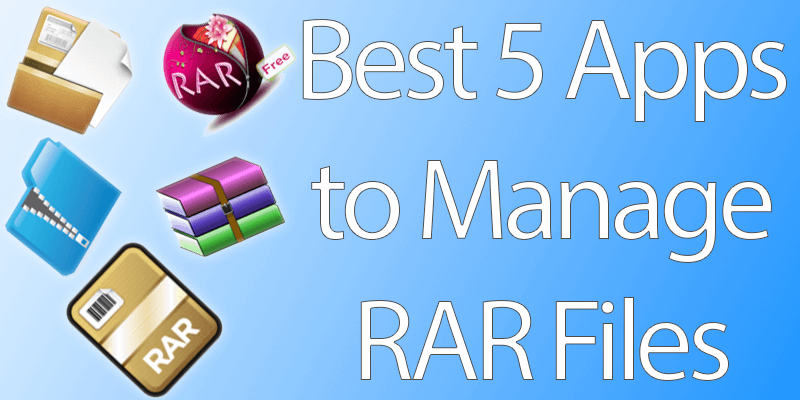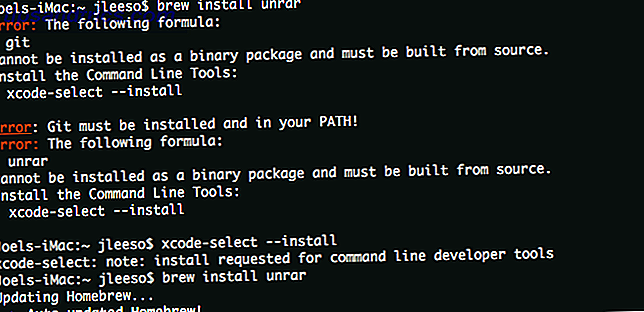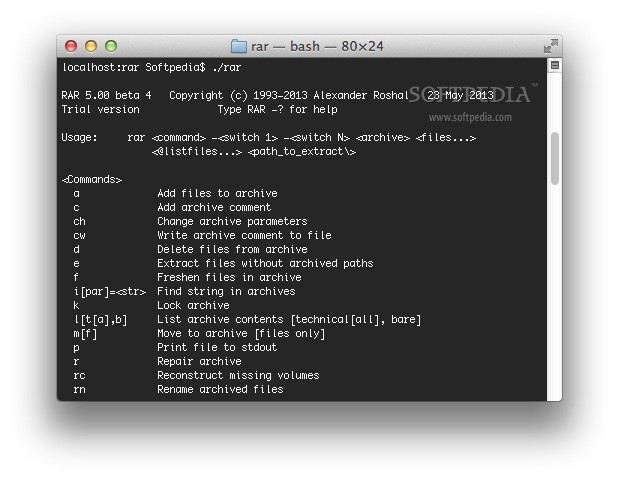

- EXTRACT RAR MAC COMMAND LINE HOW TO
- EXTRACT RAR MAC COMMAND LINE INSTALL
- EXTRACT RAR MAC COMMAND LINE FULL
- EXTRACT RAR MAC COMMAND LINE PLUS
To install unrar, open the Terminal application (Applications/Utilties/Terminal) and navigate to the rar folder. Luckily unrar is freeware and you can just use it. Rar is a demo that expires after 40 days, so don’t bother installing it unless you are planning to buy the licence (instructions are in one of the html files in the folder).
EXTRACT RAR MAC COMMAND LINE PLUS
The executables are the command line rar and unrar, plus a support file used for installation. If you double click on it, OS X will unarchive and create a folder called rar, which contains three “Unix executable files”, and a bunch of text / html files. Rarlab offers the two freeware command line tools.Īfter you download rar from RarLab‘s download section, you should find a file called something like rarosx-3.8.0.tar.gz depending on the version you downloaded. rar archives you still need a third party app such as UnRarX, Zipeg, or Stuffit. When I need to unarchive several rar files at once, I use RarLab’s command line tool.
EXTRACT RAR MAC COMMAND LINE HOW TO
If you get errors saying some of the files are corrupt, read the following two articles to determine which files are corrupt and how to potentially fix them.Bash, os x Batch unrar from the command line on Mac OS X Rar is a popular archive format on the web.
EXTRACT RAR MAC COMMAND LINE FULL
You can get a full list of the options for unrar by simply typing unrar into Terminal, and hit the Return/Enter key. Look for the word “ error” and see if any files generated an error. With the Terminal window active (and your extraction results in there) hit Command-F to bring up the Find tool. When you return it is a good idea to search for any errors. You might like to leave unrar doing its thing if there are big archives to be extracted. If you have a folder filed with unrelated RAR files, you could do them in one swipe with this command: cd ~/Documents/extraction_destinationįind ~/Downloads/ -name "*.rar" -exec unrar -pSECRET -y -ad x is used by the Find command, referring to the files just found, and \ end the command when the whole process is done. Just select the name of the first file in the batch, which should be the one with. So the command for that is the same as shown above. If the batch of files are actually just the parts of a large split RAR file, unrar will automatically go through them all. What about multi-file and batches of archives? The -y command simply tells unrar to answer yes to any yes/no questions that arise during the extraction process.

pSECRET is the command -p (indicating what follows is the password) along with THEPASSWORD which should be replaced with the actual archive password. unrar x -p THEPASSWORD -y ~/Downloads/The-archive.rar The x tells unrar to extract the following file into the current directory, whilst maintaining directory structure of the archive contents. Unrar tells unrar (the application) to execute. ~/ is an abbreviation for /Users/YourUsername/ so the full path without that abbreviation would be /Users/YourUsername/Downloads/TheArchive.rar, for instance.

Change the path to the correct one for your situation.

In Terminal type the following commands cd ~/Downloads/extraction_destinationĬd changes to the directory where you want the file(s) extracted to. Make you have you one trailing space after the command you have typed in, and then drag the file or folder to capture its path. TIP: Rather than typing the path of files and folders into Terminal you can simply drag the file or folder from Finder into Terminal. When you finish the installation keep Terminal open ready for the next step. The instructions there have been updated for OS X up to Yosemite (10.10.x). Implement the steps in this previous article on installing RAR and UNRAR command line tools. However, for those who wish to learn more about what can be done in the command line in Terminal, here are instructions on how to extract RAR archives that way. That last one (StuffIt) is in my opinion bloated and overly expensive. A few names that come to mind are The Unarchiver, The Archive Browser, Archiver, and StuffIt Expander. There are plenty of free and commercial tools to extract RAR archives on Mac OS X.


 0 kommentar(er)
0 kommentar(er)
